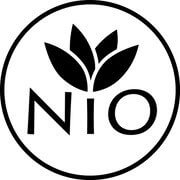Bancha is a tea made from the lower leaves on the tea plant and therefore is a lot less expensive than other teas.
It has additional benefits other than its price tag. It also is lower in caffeine and it has a really nice unique flavor to it. In this article, we are going to go through what bancha is, what it tastes like and how to prepare it.
We will also be discussing the health benefits of bancha tea and why you may want to add it to your daily routine! 🍵🍃
What is Bancha 番茶

The word bancha in Japanese contains two kanji characters “ban” 番 and cha “茶” the character “cha” clearly means tea, but the character “ban” could have 2 different meanings, which both tell you a lot about the tea itself.
The first translation of bancha is “late tea” which would make sense as this tea is harvested later on in the year, after the shincha and sencha. This would be a good way to differentiate sencha vs bancha as bancha is made from the second, third or even fourth harvest and it is made using the older leaves of the tea plant.
The second definition of bancha tells you about another aspect of the tea. “Ban” can also mean “everyday” which also makes sense when it comes to bancha because bancha tea is a much less expensive tea than sencha, so it makes sense for drinking everyday. Whatever you think the true definition is, this dichotomy is good to keep in mind when trying to understand bancha tea. It's a late harvest tea that’s meant to be inexpensive and accessible to people all around Japan.
Bancha Video Explanation
How to brew Bancha
Brewing bancha tea is easy, you just need to follow these simple instructions below. You will notice the only major difference in brewing sencha vs bancha is the temperature.
- Step 1: Add 5 grams of bancha tea to the kyusu teapot
- Step 2: Pour in 150ml-200ml of water at a temperature of 80 degrees celsius
- Step 3: Let the leaves sit for 1 minute undisturbed
- Step 4: Pour the tea out into your glass and enjoy! The built in filter inside the kyusu teapot will automatically filter out the leaves so they don’t end up in your cup
- Step 5: You can reuse the leaves 3-4 more times or just until they lose flavor. Use the same temperature water but a 20 second brewing time for each subsequent infusion.
How to make bancha taste good
There are 10 golden rules to respect if you want to make the perfect Bancha or any green tea. If you want to know more about these rules, we suggest you to read article 👉 How to make green tea taste good explained by tea experts.
10 golden rules to respect if you want to make the perfect bancha:
- Buy Better Quality Bancha
- Use the right teaware
- Steep Briefly
- Be Mindful Of Water Temperature
- Be careful with Flavoring Add-Ins
- Cold-brew your Bancha
- Selecting a Bancha that tastes great
- Brew Bancha the right way and it will taste good
- Improve bitterness of Bancha
- Choose the Best Tasting Bancha
Bancha Tea Benefits
If you're interested to learn more about the benefits of this tea, our team wrote a detail article called 👉 Bancha Tea Benefits. But below, you'll find a quick summary of the article with an explanatory video.
Bancha is often drunk after a meal because it is thought to help with digestion. This might have to do with the higher mineral content of the more mature tea leaves. You can feel this minerality in the taste as well as the texture of the tea, as it produces a slight tingling sensation on the tongue.
Bancha is a great tea for the whole family. It is alkalizing, so easier on the stomach, it has lower caffeine and more iron. Normally it is not good to give green tea to young children, but this one is often drunk by kids because it is so low in caffeine. You can also drink it later in the day without being up all night trying to sleep.
We have been testing out this Bancha for quite some time now and an amazing discovery we made is that this Bancha can be steeped up to 6 times!
What is the difference between Sencha vs Bancha
Sencha is the most common tea in Japan and bancha is the second most common. For this reason, it’s only natural to try the comparisons between sencha vs bancha. Before we get started, I’d love to invite you to read the article 👉 Everything You Need to Know About Sencha. You'll discover all the secret of this superior green tea. So what's the difference between sencha and bancha?
Sencha and bancha to come from the same plant
It’s common for a sencha and bancha to come from the same plant. Not just the same species of plant, but the same specific plant.
Sencha is made from the first harvest and the top leaves
Sencha is usually made from the first harvest and the top leaves are selected from the tea plant. These leaves tend to produce a smoother and sweeter tea with a mild astringency and some of these grassy characteristics.
Bancha is made using the older leaves from the tea plant
Bancha is made using the older leaves from the tea plant, or from later harvests. These more mature leaves are tougher and they impart a more earthy or woody taste profile into the tea. While it’s not entirely incorrect to say that bancha is made from the “leftover” leaves of the sencha production process, a lot of bancha drinkers may take offense to that! There is so many benefits to bancha tea that we will be discussing later.

What Does Bancha Tea Taste Like?
The flavor begins with a nice tree bark or wooden flavor in the first 1-3 steepings and then it settles down into a sweet mellow tea in the 4-6 steepings. The 200-gram pack we sell should last for months if you are steeping it 6 times each!
Does bancha tea have caffeine
Bancha tea has significantly less caffeine than sencha. The main difference between sencha vs bancha in terms of caffeine has to do with the leaves that are used. Caffeine is produced by the tea plant as a protection against insects. Caffeine can be incredibly bitter and even toxic to insects so it is developed around the tea leaf as a sort of protective coating.
The younger, more tender leaves of the tea plant are more vulnerable to insects, so they need to produce more caffeine in order to defend themselves. This is why teas made from younger tea leaves like gyokuro, matcha and sencha have a relatively high caffeine content.
The older, more mature leaves of the tea plant are tougher and less vulnerable to insects. This means that they don’t need to produce quite as much caffeine to protect themselves, and as a result, teas made from older leaves like genmaicha, hojicha and bancha tend to be the lower caffeine green teas.
If you are searching for the tea with lowest caffeine in Japan, you will want to take a look at teas like bancha, genmaicha, kukicha and hojicha. But what are the lowest caffeine teas? If you're interest to find out the answer, we invite you to read the article 👉 Lowest Caffeine Tea: from Lowest to Highest
Where is Bancha cultivated in Japan?
Bancha is the most common Japanese green tea after sencha, so it is no surprise that it is really cultivated everywhere. Because bancha tea is made from later harvests and older leaves, many tea farmers that produce a tea like sencha will also produce a bancha tea as well. The difference between sencha vs bancha comes more down to the picking and not the treatment of the tea plant itself, so they can really be produced from the same plant
So, to answer the question, bancha tea, like all other Japanese green teas is grown in southern and central Honshu, Shikoku and Kyushu. Northern Honshu and Hokkaido get too cold in the winter for tea plants to survive so it is really not grown much north of Tokyo.
The growing process of Japanese green tea has a lot of different answers. This is a question we get asked a lot, so we thought we’d put together a list to talk about all the different locations where japanese tea grows. If you're interested, we invite you to read the article 👉 Where Does Japanese Tea Grow?
Where to buy bancha tea

If you're looking for any Japanese green tea, Nio Teas is the online shop made for you. We're building the biggest worldwide online selling plateform for Japanese small farmers. And yes, we're selling bancha 🍃
While many bancha teas lack complexity, the bancha from Masudaen is truly exceptional. There is a nice subtle taste of popcorn that even goes in the direction of a Genmaicha. We visited Masudaen last summer and learned so much at the farm, in the factory and in the tasting room. The farmers here really know their tea!
You can find the Bancha Masudaen in our Japanese Green Tea online store. You’ll notice that this tea is quite affordable compared to other loose leaf Japanese green teas.




